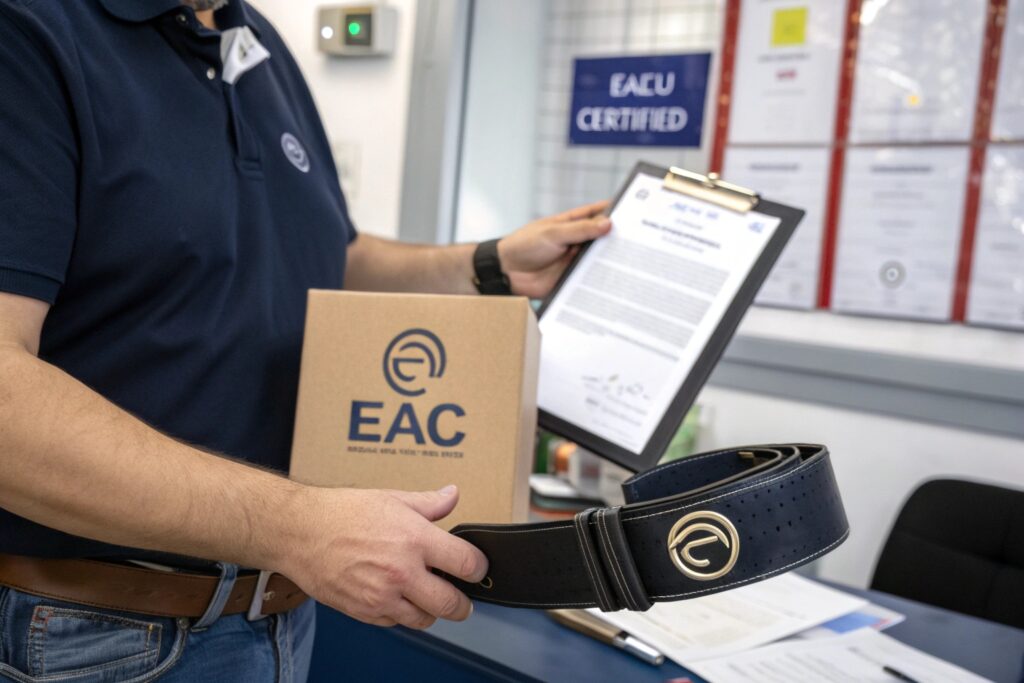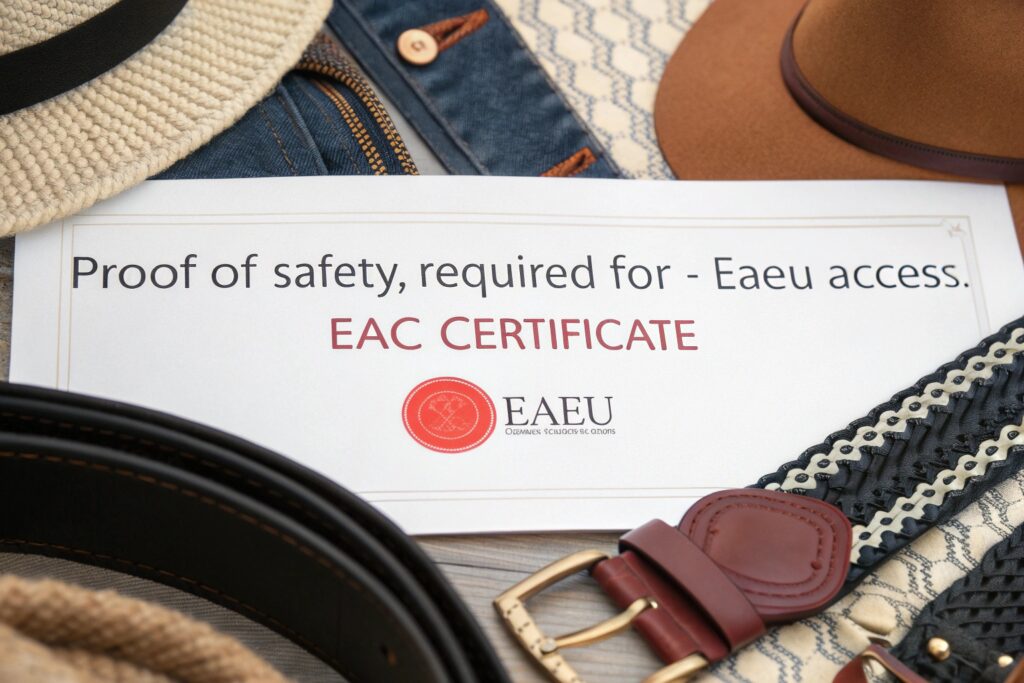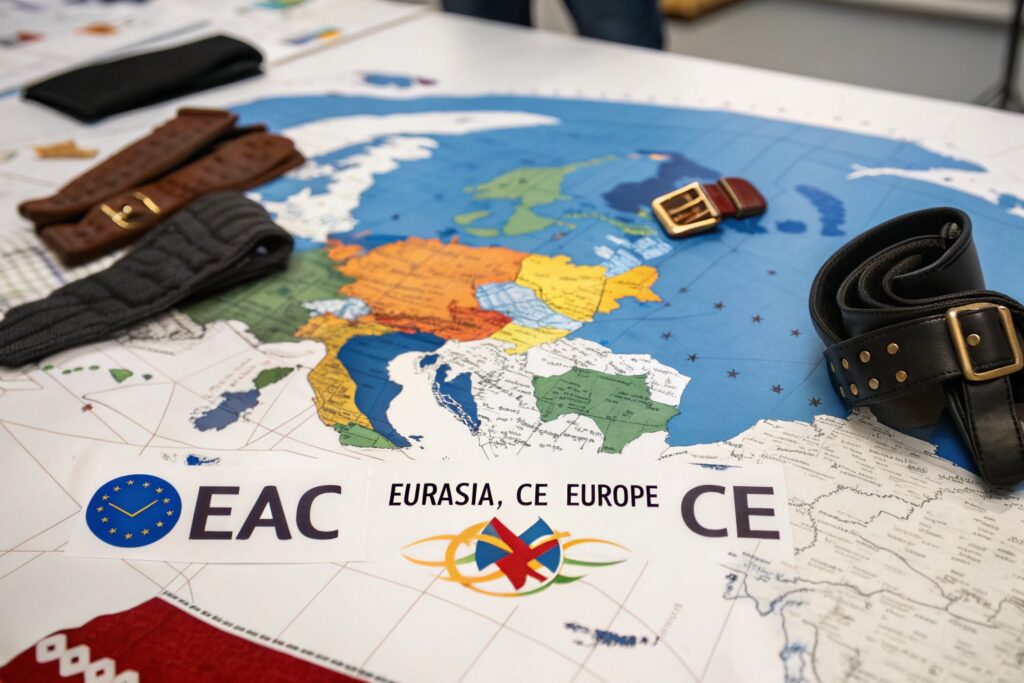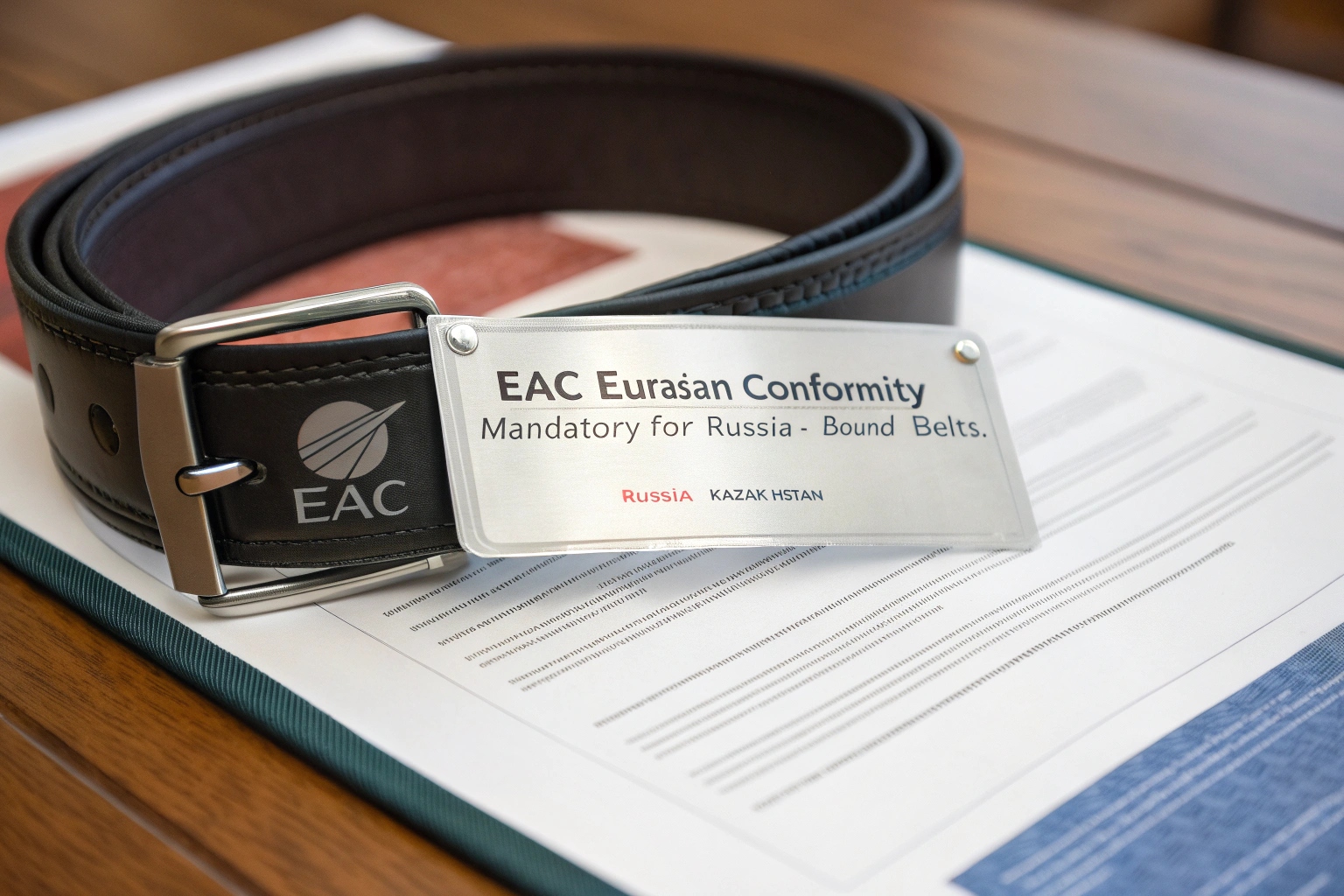You’re shipping belts to Russia—but your client asks: where’s the EAC mark?
All belts imported into the Eurasian Economic Union (EAEU)—including Russia—must comply with EAC certification rules, which prove conformity with regional safety, labeling, and product standards.
At AceAccessory, we’ve helped belt buyers export to Russia, Kazakhstan, and Belarus by securing the right documents and applying the required EAC mark. In this article, I’ll explain how the EAC system works, what it covers, and how it compares to Europe’s CE marking.
What is the EAC regulation in Russia?
Before you ship anything to Russia, you need to understand how the EAC (Eurasian Conformity) system operates.
EAC is the official certification system used by Russia and the EAEU to ensure that imported goods meet regional safety and quality standards before they’re allowed into customs clearance.

What countries require EAC certification?
The EAC system applies across the Eurasian Economic Union, which includes:
- Russia
- Belarus
- Kazakhstan
- Armenia
- Kyrgyzstan
Products that fall under technical regulations must comply with relevant TR CU (Technical Regulation of the Customs Union) standards.
For belts, the applicable standard is typically:
- TR CU 017/2011 – On safety of products of light industry
This regulation governs items such as:
- Textile belts
- Leather belts
- Clothing accessories
To export to Russia, your belt must:
- Pass lab testing (if required)
- Have a valid Declaration or Certificate of Conformity
- Be labeled with the EAC mark
- Include Russian-language care and content labeling
At AceAccessory, we handle testing and EAC declarations through certified Russian partners—so your belts can enter without delay.
What are the requirements for EAC mark?
You can’t just print an EAC label on your packaging. It must be legally supported by certified documentation.
To legally apply the EAC mark, the product must pass testing (if applicable), have valid technical files, and be registered with an authorized EAEU certifying body.

What documents are needed to apply the EAC mark on belts?
Here’s a typical document set for belts:
| Document | Purpose |
|---|---|
| EAC Declaration of Conformity | Proves product complies with TR CU 017/2011 |
| Product Test Report | Verifies safety, flammability, and durability |
| Labeling Sheet (in Russian) | Confirms care instructions, fiber content |
| Factory ISO Certificate | (Optional) Supports quality claims |
Once approved, you can apply the EAC logo like this:
- On the sewn-in or hang tag
- On the retail box (if applicable)
- On the outer export carton (optional but suggested)
| EAC Label Must Be: | Requirement |
|---|---|
| At least 5mm tall | Clearly visible |
| In proportion | Not distorted or stylized |
| Permanent | Not removable or sticker-based |
Our team applies compliant woven labels or hang tags in Russian, including:
- “Состав” – fiber content
- “Страна происхождения” – country of origin
- “Годен до” – production or batch number
This ensures the product is retail-ready upon entry into the Russian market.
What is the EAC certificate?
Depending on product type, you’ll either need a Declaration of Conformity (DoC) or a Certificate of Conformity (CoC).
The EAC Certificate is an official document issued by an authorized EAEU certification body confirming that a product meets specific technical regulations for safety and quality.

Declaration vs. Certificate—what’s the difference?
For most light industry goods like belts, a Declaration of Conformity is sufficient. But higher-risk goods (e.g. electronics, machinery) need a Certificate of Conformity.
| Type | Description | Who Issues? |
|---|---|---|
| Declaration of Conformity | Self-declared with certified lab tests | Applicant, validated by body |
| Certificate of Conformity | Third-party certification, stricter | Authorized EAEU agency |
At AceAccessory, we prepare the following for Russian buyers:
- Signed Declaration of Conformity (DoC)
- Full label proof + barcode images
- Packing list with SKUs and materials
- Translation of care labels and fiber sheets
Most declarations are valid for 5 years unless otherwise specified.
We store digital copies in your shipment archive in case Russian customs requests inspection or post-clearance verification.
What is the difference between EAC certification and CE marking?
They look similar—but EAC and CE represent different systems, for different regions, with different standards.
EAC certification is for the Eurasian market (Russia and EAEU), while CE marking is for the European Union. Each system has its own product scope, testing requirements, and documentation.

How do EAC and CE compare for accessory exporters?
| Feature | EAC (EAEU) | CE (EU) |
|---|---|---|
| Region | Russia, Belarus, Kazakhstan, etc. | European Union, EEA |
| Labeling | EAC logo, Russian labeling | CE logo, EU-language instructions |
| Product Scope | Broad, incl. clothing, belts | Mostly electronics, toys, PPE |
| Approval Type | DoC or CoC | Self-declaration or Notified Body |
| Enforcement | Border control + local authorities | Market surveillance |
If you're exporting to both the EU and Russia, you’ll need to meet both sets of rules. We handle dual labeling for our clients with bilingual support and multiple regulatory files.
Note: EAC ≠ CE. Using a CE mark for EAEU import is not accepted and may cause rejection.
Conclusion
If you’re shipping belts to Russia or the EAEU, you must comply with EAC certification rules. That means using the right HS code, applying for a Declaration of Conformity under TR CU 017/2011, labeling products correctly in Russian, and attaching the EAC mark. At AceAccessory, we prepare all documents and ensure your shipment clears without delay—no guesswork, no missing forms.










